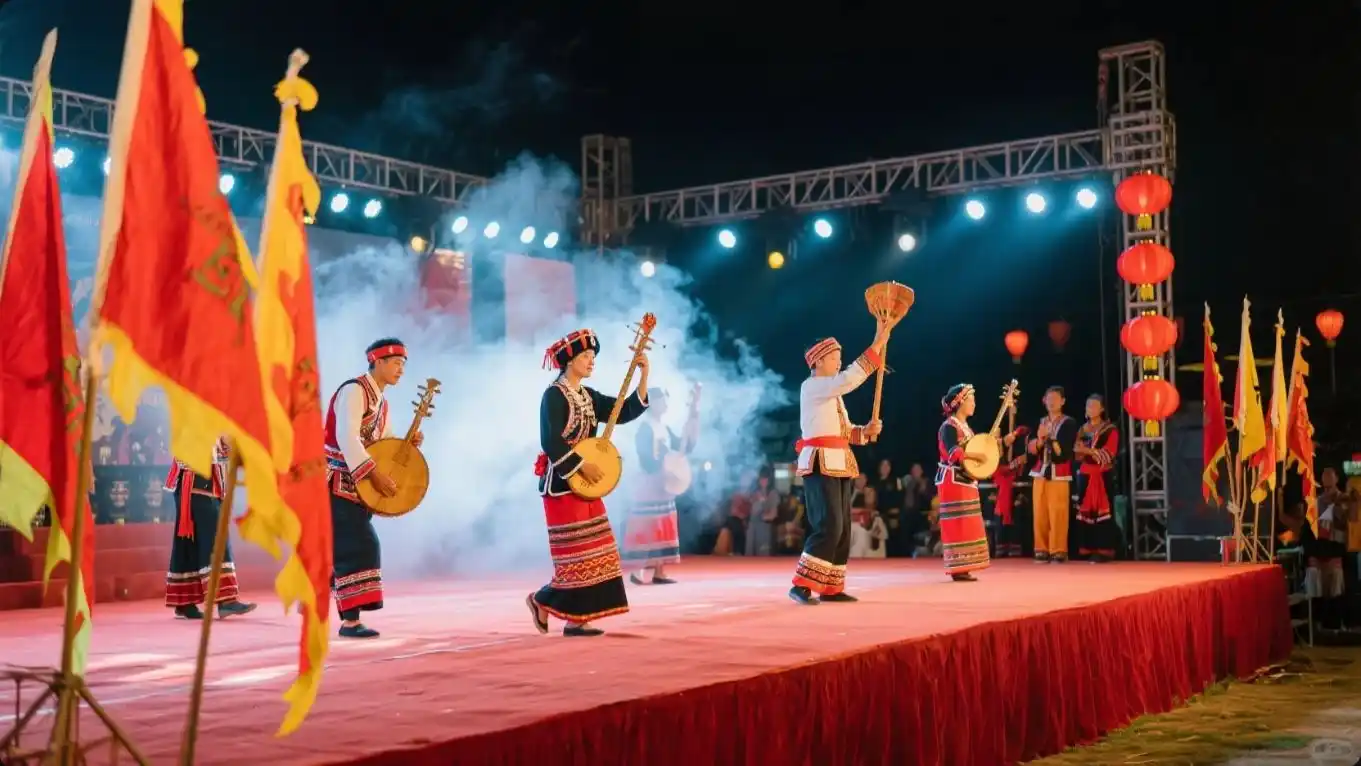Chủ đề “100 từ vựng và cụm từ vựng tiếng Anh về ngành nghề Quản trị dự án xây dựng công trình thủy lợi” cung cấp bộ từ vựng chuyên ngành giúp người học hiểu rõ hơn về các khía cạnh kỹ thuật và quản lý trong lĩnh vực này. Từ đó, nâng cao khả năng giao tiếp và làm việc trong môi trường quốc tế.
Từ vựng nghề Quản trị dự án xây dựng công trình thủy lợi
- Hydraulic engineering – Kỹ thuật thủy lực
- Water resources management – Quản lý tài nguyên nước
- Dam construction – Xây dựng đập
- Irrigation system – Hệ thống tưới tiêu
- Flood control – Kiểm soát lũ lụt
- Water supply system – Hệ thống cấp nước
- Drainage system – Hệ thống thoát nước
- Hydropower plant – Nhà máy thủy điện
- Reservoir – Hồ chứa
- Aqueduct – Cống dẫn nước
- Canal – Kênh đào
- River basin – Lưu vực sông
- Watershed management – Quản lý lưu vực
- Embankment – Đê điều
- Spillway – Cống xả lũ
- Water diversion – Chuyển hướng nước
- Siltation – Bồi lắng
- Sedimentation – Trầm tích
- Riprap – Đá bảo vệ bờ
- Gabion – Lưới rọ đá
- Weir – Đập tràn
- Culvert – Cống ngầm
- Lock (waterway) – Kênh khóa
- Dredging – Nạo vét
- Water intake structure – Công trình lấy nước
- Catchment area – Khu vực lưu giữ nước
- Pumping station – Trạm bơm
- Penstock – Đường ống dẫn nước
- Tidal barrage – Đập ngăn thủy triều
- Sediment trap – Bẫy trầm tích
- Fish ladder – Thang cá
- Water retention – Giữ nước
- Erosion control – Kiểm soát xói mòn
- Slope stability – Ổn định mái dốc
- Groundwater recharge – Bổ sung nước ngầm
- Water table – Mực nước ngầm
- Aquifer – Tầng chứa nước
- Levee – Đê ngăn lũ
- Stormwater management – Quản lý nước mưa
- Climate adaptation – Thích ứng với khí hậu
- Water distribution network – Mạng lưới phân phối nước
- Desalination plant – Nhà máy khử mặn
- Water treatment plant – Nhà máy xử lý nước
- Wastewater management – Quản lý nước thải
- Hydraulic structure – Công trình thủy lực
- Environmental impact assessment – Đánh giá tác động môi trường
- Project feasibility study – Nghiên cứu tính khả thi dự án
- Construction management – Quản lý xây dựng
- Project planning – Lập kế hoạch dự án
- Project scheduling – Lập lịch dự án
- Cost estimation – Ước tính chi phí
- Budgeting – Lập ngân sách
- Risk management – Quản lý rủi ro
- Quality control – Kiểm soát chất lượng
- Safety standards – Tiêu chuẩn an toàn
- Compliance – Tuân thủ quy định
- Construction phase – Giai đoạn xây dựng
- Maintenance phase – Giai đoạn bảo trì
- Inspection – Kiểm tra
- Commissioning – Nghiệm thu
- As-built drawing – Bản vẽ hoàn công
- Site survey – Khảo sát hiện trường
- Geotechnical investigation – Điều tra địa kỹ thuật
- Soil analysis – Phân tích đất
- Concrete mix design – Thiết kế cấp phối bê tông
- Reinforced concrete – Bê tông cốt thép
- Steel reinforcement – Cốt thép
- Foundation design – Thiết kế móng
- Pile driving – Đóng cọc
- Earthworks – Công tác đất
- Excavation – Đào đắp
- Backfilling – Đắp lại
- Compaction – Đầm chặt
- Grouting – Phun vữa
- Waterproofing – Chống thấm
- Structural integrity – Tính toàn vẹn kết cấu
- Hydraulic gradient – Độ dốc thủy lực
- Flow rate – Lưu lượng dòng chảy
- Velocity head – Cột áp vận tốc
- Pump efficiency – Hiệu suất bơm
- Valve operation – Vận hành van
- Gate operation – Vận hành cửa
- Instrumentation – Dụng cụ đo lường
- Monitoring system – Hệ thống giám sát
- Control room – Phòng điều khiển
- Operation and maintenance manual – Sổ tay vận hành và bảo trì
- Sediment removal – Loại bỏ trầm tích
- Bank protection – Bảo vệ bờ
- Riparian zone – Khu vực bờ sông
- Watershed protection – Bảo vệ lưu vực
- Biodiversity conservation – Bảo tồn đa dạng sinh học
- Water quality monitoring – Giám sát chất lượng nước
- Effluent discharge – Xả thải
- Pollution control – Kiểm soát ô nhiễm
- Aquatic ecosystem – Hệ sinh thái nước
- Sustainable water management – Quản lý nước bền vững
- Resource allocation – Phân bổ tài nguyên
- Project coordination – Điều phối dự án
- Stakeholder engagement – Tham gia của các bên liên quan
- Regulatory compliance – Tuân thủ quy định pháp luật
Bài viết sử dụng thuật ngữ trên
- Hydraulic engineering is essential for designing water-related infrastructure.
- Effective water resources management ensures sustainable use of water.
- The dam construction will help control flooding in the area.
- The irrigation system is designed to distribute water evenly across the fields.
- The flood control measures will protect the city during the rainy season.
- The water supply system must be reliable to serve the entire community.
- A proper drainage system is crucial to prevent waterlogging.
- The hydropower plant generates electricity using the flow of water.
- The reservoir stores water during the dry season.
- An aqueduct was built to transport water over long distances.
- The canal connects the river to the agricultural lands.
- The river basin management plan aims to protect water quality.
- Effective watershed management reduces the risk of erosion.
- The embankment will be strengthened to withstand heavy rain.
- The spillway controls the release of water from the dam.
- Water diversion is necessary to irrigate the fields.
- Siltation in the reservoir reduces its storage capacity.
- The sedimentation process affects the quality of water in the reservoir.
- Riprap is used to protect the riverbank from erosion.
- The gabion structure helps stabilize the riverbank.
- The weir was constructed to control the flow of water.
- A culvert allows water to pass under the road.
- The lock system enables boats to navigate through the waterway.
- Dredging is required to maintain the depth of the channel.
- The water intake structure directs water into the treatment plant.
- The catchment area is vital for collecting rainwater.
- The pumping station operates 24/7 to supply water to the city.
- The penstock carries water to the turbines in the hydropower plant.
- The tidal barrage is designed to generate power from tidal movements.
- The sediment trap prevents silt from entering the water treatment facility.
- The fish ladder helps fish migrate upstream past the dam.
- Water retention strategies are key to managing water resources.
- Erosion control measures are necessary to protect the riverbanks.
- Slope stability is essential for safe construction in hilly areas.
- Groundwater recharge helps replenish the aquifer.
- The water table level is monitored regularly to assess groundwater availability.
- The aquifer provides a critical source of drinking water for the region.
- The levee was constructed to prevent flooding in the low-lying areas.
- Stormwater management is important to avoid urban flooding.
- Climate adaptation strategies are crucial for resilient infrastructure.
- The water distribution network supplies clean water to homes and businesses.
- The desalination plant converts seawater into freshwater.
- The water treatment plant ensures that the water meets safety standards.
- Effective wastewater management reduces pollution in rivers and lakes.
- Hydraulic structures like dams and weirs control water flow.
- An environmental impact assessment was conducted before starting the project.
- The project feasibility study confirmed the viability of the new dam.
- Construction management is key to keeping the project on schedule.
- Detailed project planning helps anticipate potential challenges.
- Project scheduling ensures that all tasks are completed on time.
- Accurate cost estimation is crucial for project budgeting.
- Budgeting for the project included unexpected costs for materials.
- Risk management involves identifying potential issues before they arise.
- Quality control ensures that the construction meets safety standards.
- All safety standards were adhered to during the construction of the dam.
- Compliance with environmental regulations is mandatory for the project.
- The construction phase will begin once all permits are approved.
- The maintenance phase includes regular inspections of the dam.
- The inspection revealed some areas that needed immediate repair.
- Commissioning of the hydropower plant is scheduled for next month.
- The as-built drawing will provide a record of the final construction details.
- A site survey was conducted to determine the best location for the dam.
- Geotechnical investigation is necessary to assess soil stability.
- Soil analysis showed that the area is suitable for construction.
- The concrete mix design was adjusted to improve strength.
- Reinforced concrete is used in the construction of the dam’s foundation.
- Steel reinforcement ensures the durability of the concrete structure.
- The foundation design was revised to accommodate the heavy loads.
- Pile driving is used to create a stable foundation for the structure.
- Earthworks involve moving large amounts of soil to shape the landscape.
- Excavation for the dam’s foundation began last week.
- Backfilling is necessary after the installation of underground pipes.
- Proper compaction ensures that the soil is stable and prevents settling.
- Grouting is used to fill voids and strengthen the structure.
- Waterproofing is essential to prevent water from seeping into the structure.
- Structural integrity must be maintained to ensure the safety of the dam.
- The hydraulic gradient affects the flow of water through the dam.
- The flow rate of water is measured to ensure the system’s efficiency.
- The velocity head is an important factor in designing water pipelines.
- Pump efficiency is crucial for minimizing energy consumption.
- Valve operation is controlled automatically to regulate water flow.
- Gate operation must be precise to manage water levels in the reservoir.
- Instrumentation is used to monitor the dam’s structural health.
- The monitoring system alerts engineers to any potential issues.
- The control room is where all dam operations are monitored and controlled.
- The operation and maintenance manual provides guidelines for routine checks.
- Sediment removal is required to maintain the capacity of the reservoir.
- Bank protection measures include planting vegetation along the riverbank.
- The riparian zone provides a buffer between the river and the surrounding land.
- Watershed protection is key to maintaining clean water in the river.
- Biodiversity conservation ensures that wildlife is protected in the area.
- Water quality monitoring is conducted regularly to check for contaminants.
- Effluent discharge is regulated to prevent pollution of the waterway.
- Pollution control measures include treating wastewater before discharge.
- The aquatic ecosystem must be preserved during construction activities.
- Sustainable water management practices are essential for long-term resource use.
- Resource allocation involves distributing funds and materials efficiently.
- Project coordination ensures that all teams work together effectively.
- Stakeholder engagement is crucial for gaining community support.
- Regulatory compliance is required to meet legal standards and guidelines.
Bài tập
- ___________ engineering is essential for designing water-related infrastructure.
- Effective ___________ resources management ensures sustainable use of water.
- The ___________ construction will help control flooding in the area.
- The ___________ system is designed to distribute water evenly across the fields.
- The ___________ control measures will protect the city during the rainy season.
- The ___________ supply system must be reliable to serve the entire community.
- A proper ___________ system is crucial to prevent waterlogging.
- The ___________ plant generates electricity using the flow of water.
- The ___________ stores water during the dry season.
- An ___________ was built to transport water over long distances.
- The ___________ connects the river to the agricultural lands.
- The ___________ basin management plan aims to protect water quality.
- Effective ___________ management reduces the risk of erosion.
- The ___________ will be strengthened to withstand heavy rain.
- The ___________ controls the release of water from the dam.
- ___________ diversion is necessary to irrigate the fields.
- ___________ in the reservoir reduces its storage capacity.
- The ___________ process affects the quality of water in the reservoir.
- ___________ is used to protect the riverbank from erosion.
- The ___________ structure helps stabilize the riverbank.
- The ___________ was constructed to control the flow of water.
- A ___________ allows water to pass under the road.
- The ___________ system enables boats to navigate through the waterway.
- ___________ is required to maintain the depth of the channel.
- The ___________ intake structure directs water into the treatment plant.
- The ___________ area is vital for collecting rainwater.
- The ___________ station operates 24/7 to supply water to the city.
- The ___________ carries water to the turbines in the hydropower plant.
- The ___________ barrage is designed to generate power from tidal movements.
- The ___________ trap prevents silt from entering the water treatment facility.
- The ___________ ladder helps fish migrate upstream past the dam.
- ___________ retention strategies are key to managing water resources.
- ___________ control measures are necessary to protect the riverbanks.
- ___________ stability is essential for safe construction in hilly areas.
- ___________ recharge helps replenish the aquifer.
- The ___________ table level is monitored regularly to assess groundwater availability.
- The ___________ provides a critical source of drinking water for the region.
- The ___________ was constructed to prevent flooding in the low-lying areas.
- ___________ management is important to avoid urban flooding.
- ___________ adaptation strategies are crucial for resilient infrastructure.
- The ___________ distribution network supplies clean water to homes and businesses.
- The ___________ plant converts seawater into freshwater.
- The ___________ treatment plant ensures that the water meets safety standards.
- Effective ___________ management reduces pollution in rivers and lakes.
- ___________ structures like dams and weirs control water flow.
- An ___________ impact assessment was conducted before starting the project.
- The project ___________ study confirmed the viability of the new dam.
- ___________ management is key to keeping the project on schedule.
- Detailed project ___________ helps anticipate potential challenges.
- Project ___________ ensures that all tasks are completed on time.
- Accurate cost ___________ is crucial for project budgeting.
- ___________ for the project included unexpected costs for materials.
- ___________ management involves identifying potential issues before they arise.
- ___________ control ensures that the construction meets safety standards.
- All ___________ standards were adhered to during the construction of the dam.
- ___________ with environmental regulations is mandatory for the project.
- The ___________ phase will begin once all permits are approved.
- The ___________ phase includes regular inspections of the dam.
- The ___________ revealed some areas that needed immediate repair.
- ___________ of the hydropower plant is scheduled for next month.
- The ___________ drawing will provide a record of the final construction details.
- A ___________ survey was conducted to determine the best location for the dam.
- ___________ investigation is necessary to assess soil stability.
- ___________ analysis showed that the area is suitable for construction.
- The ___________ mix design was adjusted to improve strength.
- ___________ concrete is used in the construction of the dam’s foundation.
- ___________ reinforcement ensures the durability of the concrete structure.
- The ___________ design was revised to accommodate the heavy loads.
- ___________ driving is used to create a stable foundation for the structure.
- ___________ involve moving large amounts of soil to shape the landscape.
- ___________ for the dam’s foundation began last week.
- ___________ is necessary after the installation of underground pipes.
- Proper ___________ ensures that the soil is stable and prevents settling.
- ___________ is used to fill voids and strengthen the structure.
- ___________ is essential to prevent water from seeping into the structure.
- ___________ integrity must be maintained to ensure the safety of the dam.
- The ___________ gradient affects the flow of water through the dam.
- The ___________ rate of water is measured to ensure the system’s efficiency.
- The ___________ head is an important factor in designing water pipelines.
- ___________ efficiency is crucial for minimizing energy consumption.
- ___________ operation is controlled automatically to regulate water flow.
- ___________ operation must be precise to manage water levels in the reservoir.
- ___________ is used to monitor the dam’s structural health.
- The ___________ system alerts engineers to any potential issues.
- The ___________ room is where all dam operations are monitored and controlled.
- The operation and ___________ manual provides guidelines for routine checks.
- ___________ removal is required to maintain the capacity of the reservoir.
- ___________ protection measures include planting vegetation along the riverbank.
- The ___________ zone provides a buffer between the river and the surrounding land.
- ___________ protection is key to maintaining clean water in the river.
- ___________ conservation ensures that wildlife is protected in the area.
- ___________ quality monitoring is conducted regularly to check for contaminants.
- ___________ discharge is regulated to prevent pollution of the waterway.
- ___________ control measures include treating wastewater before discharge.
- The ___________ ecosystem must be preserved during construction activities.
- ___________ water management practices are essential for long-term resource use.
- ___________ allocation involves distributing funds and materials efficiently.
- Project ___________ ensures that all teams work together effectively.
- ___________ engagement is crucial for gaining community support.
- ___________ compliance is required to meet legal standards and guidelines.











